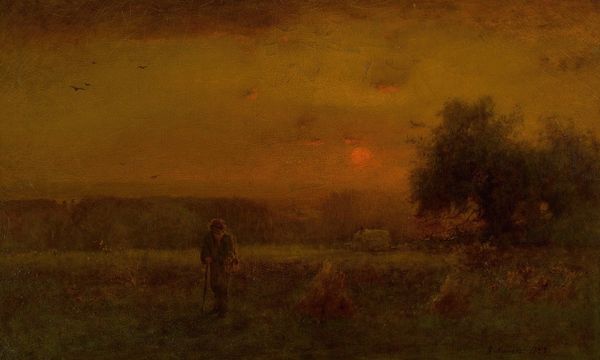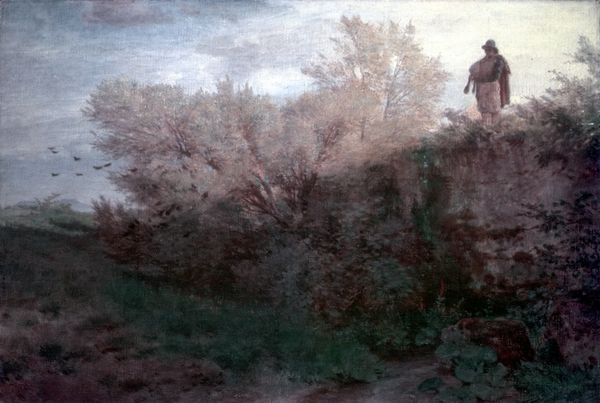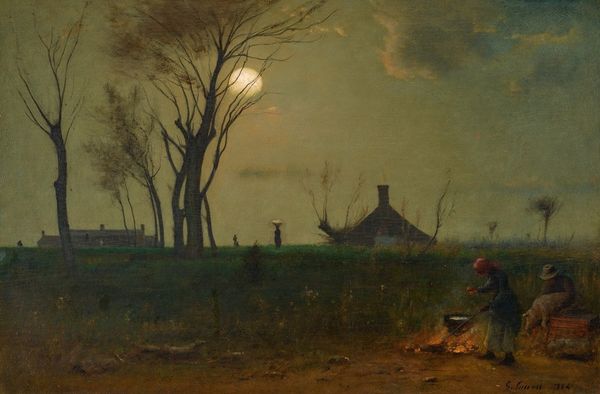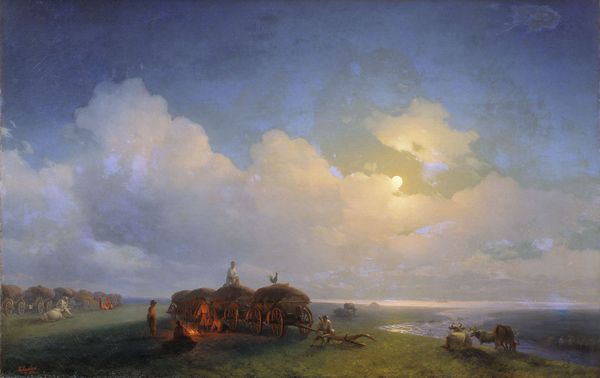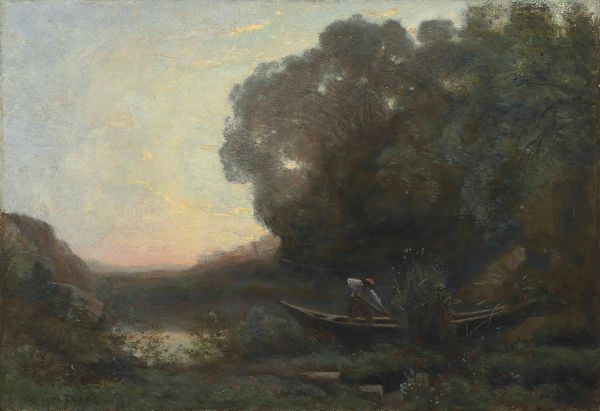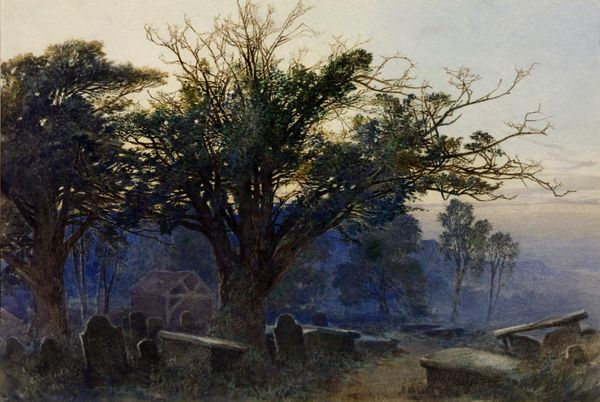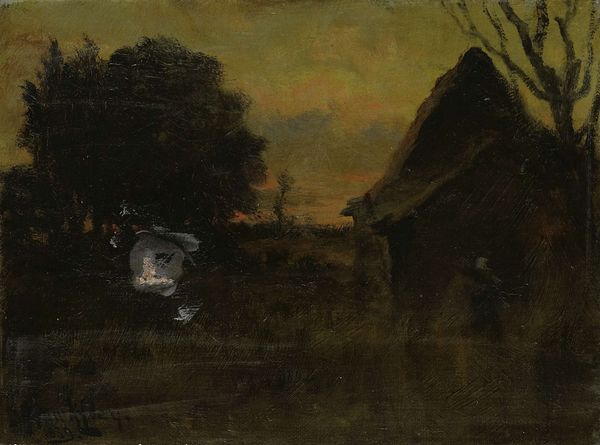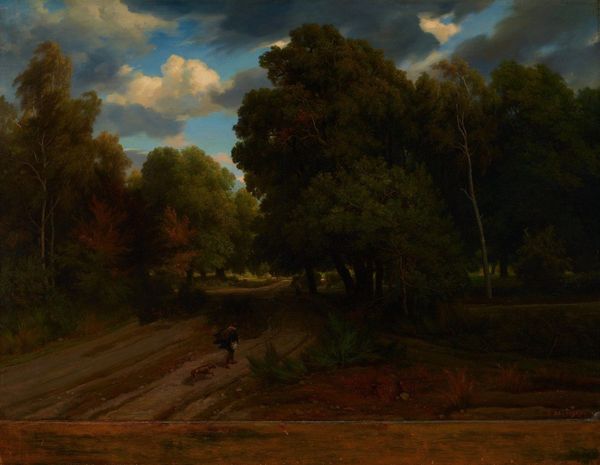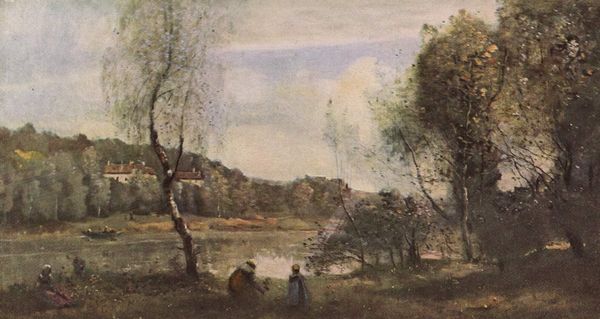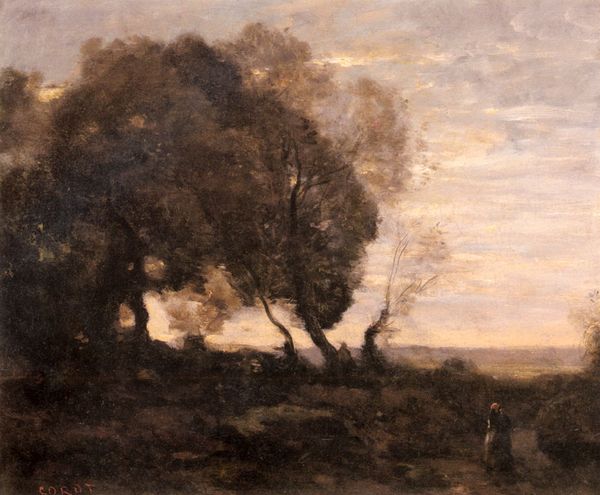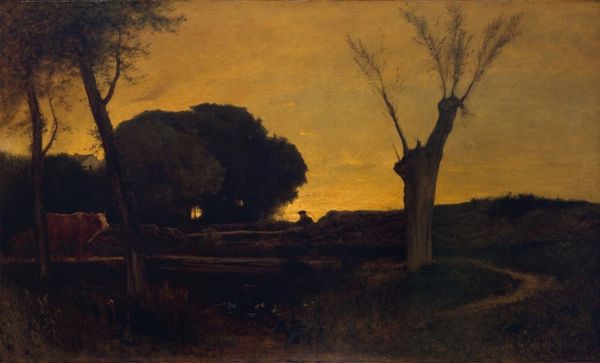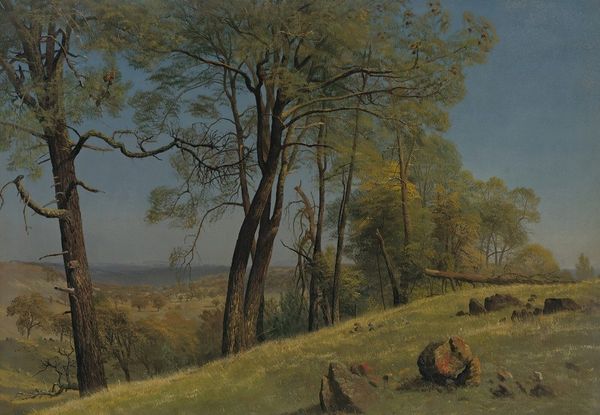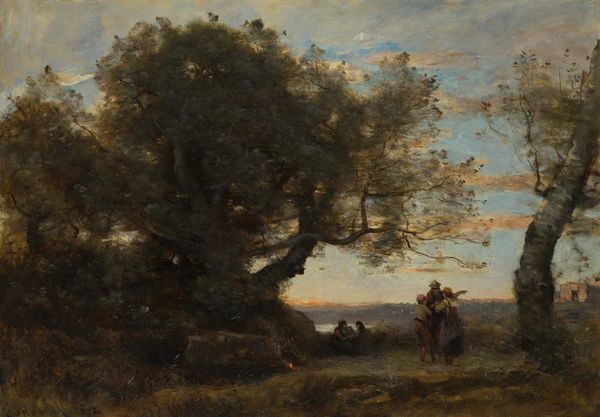
painting, plein-air
#
portrait
#
painting
#
plein-air
#
landscape
#
nature
#
romanticism
#
miniature
Copyright: Public domain
Curator: Caspar David Friedrich painted this piece, "A Walk at Dusk (with Tumulus)," in 1837. Editor: It's strikingly somber, wouldn't you agree? That pervasive blue-gray tonality… it feels almost spectral, like a memory fading into the mist. Curator: Indeed. Friedrich’s Romantic sensibilities often grappled with mortality, and here, we see him engage with themes of history and the self in relation to nature. The figure contemplating the tumulus—that ancient burial mound—resonates deeply with the German concept of Sehnsucht, a longing for something unattainable. Editor: It’s the tumulus that interests me, its sheer physicality amidst the ethereal landscape. This juxtaposition highlights Friedrich’s connection to landscape not merely as spectacle, but as something forged by human labor and imbued with social meaning, literally marking sites of the dead. It seems so deliberately composed. Curator: Absolutely. Friedrich meticulously constructed this landscape to explore national identity. The tumulus, being a site of ancestral remains, symbolizes a connection to the past, perhaps a yearning for a unified German identity during a time of political fragmentation. And we shouldn’t overlook the gendered aspects of the painting; Friedrich's work has often been interpreted through a feminist lens, the lone male figure symbolic of a dominant, if solitary, presence in nature, but his back is turned. It presents the possibilities of alternatives to established social roles, maybe even of resisting nationalism in that historical moment. Editor: But the way he layers the paint, that thin veil of color over color, isn’t about some grand statement; it's about crafting that mood. The fog, or mist – it physically softens and almost dissolves the details. He’s not just presenting the scene; he's creating an atmosphere using his technical facility. It's worth thinking about the pigment choices and what a painting like this might have signaled in the history of landscape painting. Curator: Those are crucial aspects. And considering the cultural milieu, one can understand why Friedrich felt compelled to paint landscapes imbued with symbolism to evoke the political anxieties of his time. Editor: Ultimately, it strikes me that this piece presents the tension between materiality and the sublime, a tension perhaps inherent in our encounters with nature, our history, and art itself. Curator: It does invite contemplation, prompting reflections on our connections to the land and the historical narratives embedded within it.
Comments
No comments
Be the first to comment and join the conversation on the ultimate creative platform.
